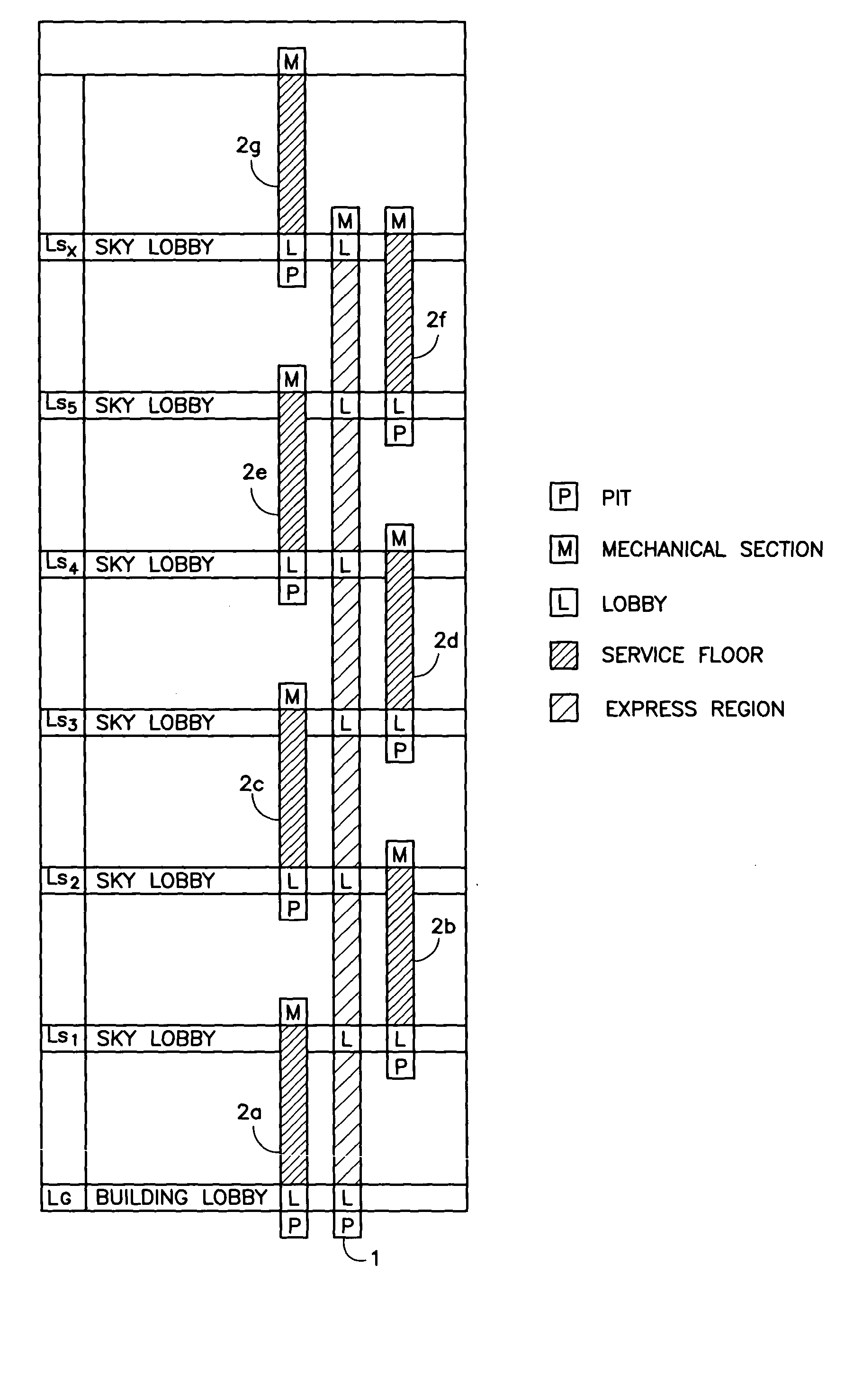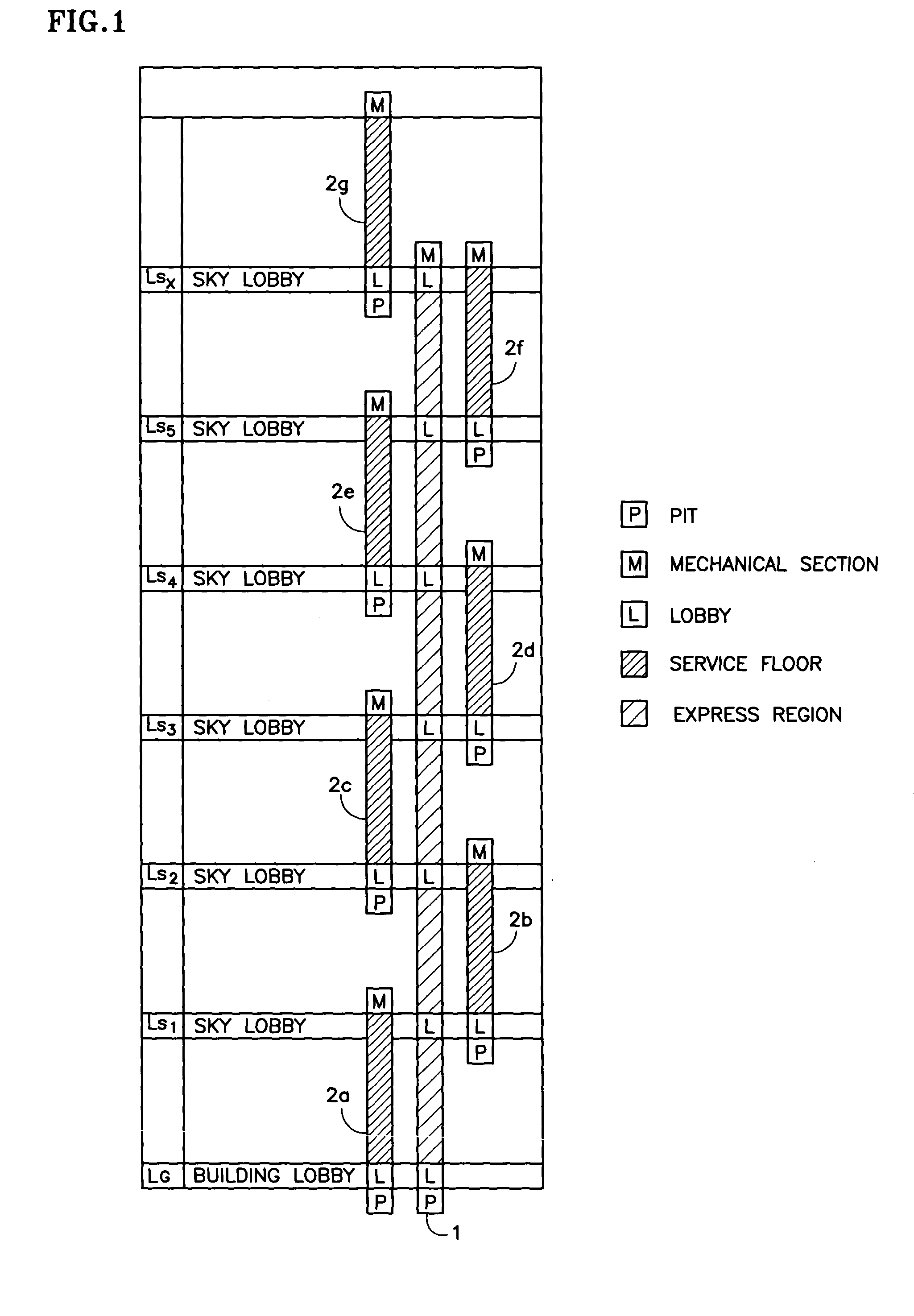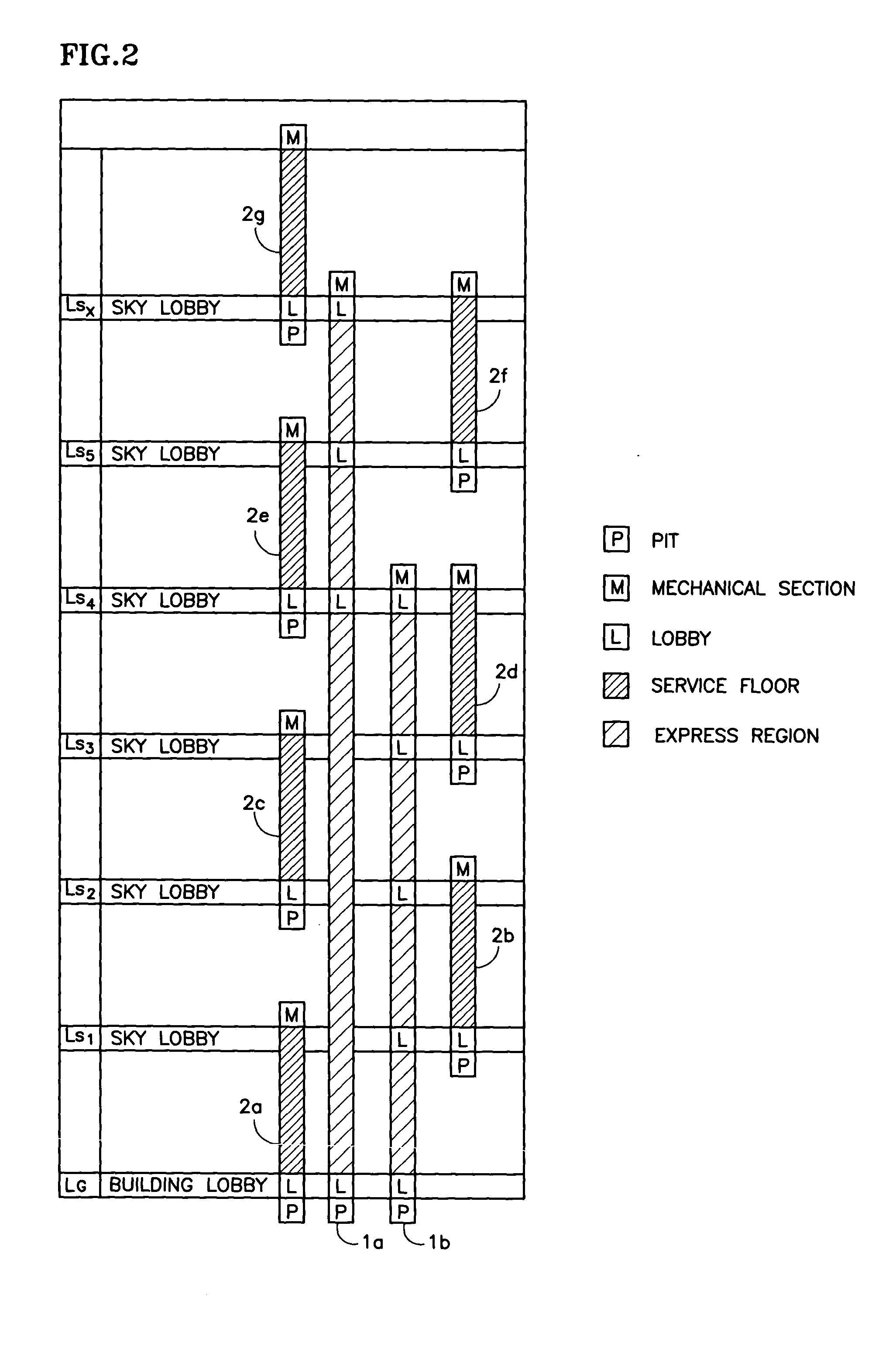Elevator device for a multi-sky-lobby system
- Summary
- Abstract
- Description
- Claims
- Application Information
AI Technical Summary
Benefits of technology
Problems solved by technology
Method used
Image
Examples
Embodiment Construction
[0053] In the following, embodiments of the present invention will be explained with reference to the figures. In the constitution of the present invention, all of the connection floors and transfer floors in the elevator system of the conventional system (zone or sky lobby) are used as sky lobbies (a sky lobby for each bank of the local elevator), and a shuttle elevator is arranged to service the lobbies (sky lobbies) of the various banks of the local elevators (when there is a significant increase in the bank number, the shuttle elevators are zoned).
[0054] In FIG. 1, LG represents the building lobby at ground level. Sky lobbies Ls1-Lsx are arranged above said building lobby, with a prescribed number of floors between them. (1) represents a shuttle elevator that stops only at said building lobby LG and sky lobbies Ls1-Lsx, and the floors in the region between said lobbies are used the express region.
[0055] (2a) represents a local elevator that services various floors in the first...
PUM
 Login to View More
Login to View More Abstract
Description
Claims
Application Information
 Login to View More
Login to View More - R&D
- Intellectual Property
- Life Sciences
- Materials
- Tech Scout
- Unparalleled Data Quality
- Higher Quality Content
- 60% Fewer Hallucinations
Browse by: Latest US Patents, China's latest patents, Technical Efficacy Thesaurus, Application Domain, Technology Topic, Popular Technical Reports.
© 2025 PatSnap. All rights reserved.Legal|Privacy policy|Modern Slavery Act Transparency Statement|Sitemap|About US| Contact US: help@patsnap.com



